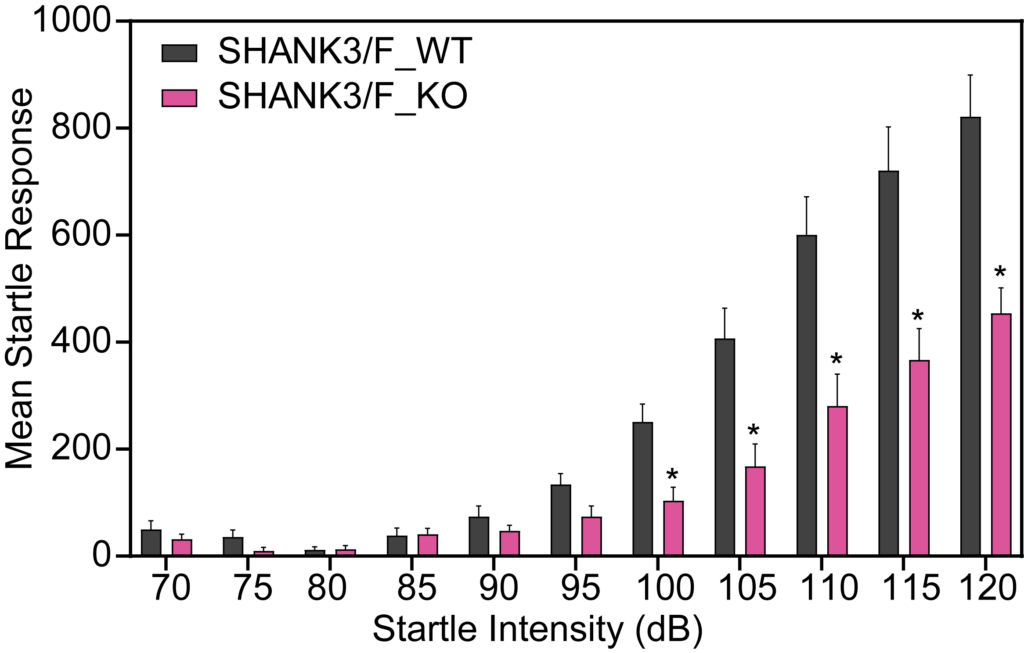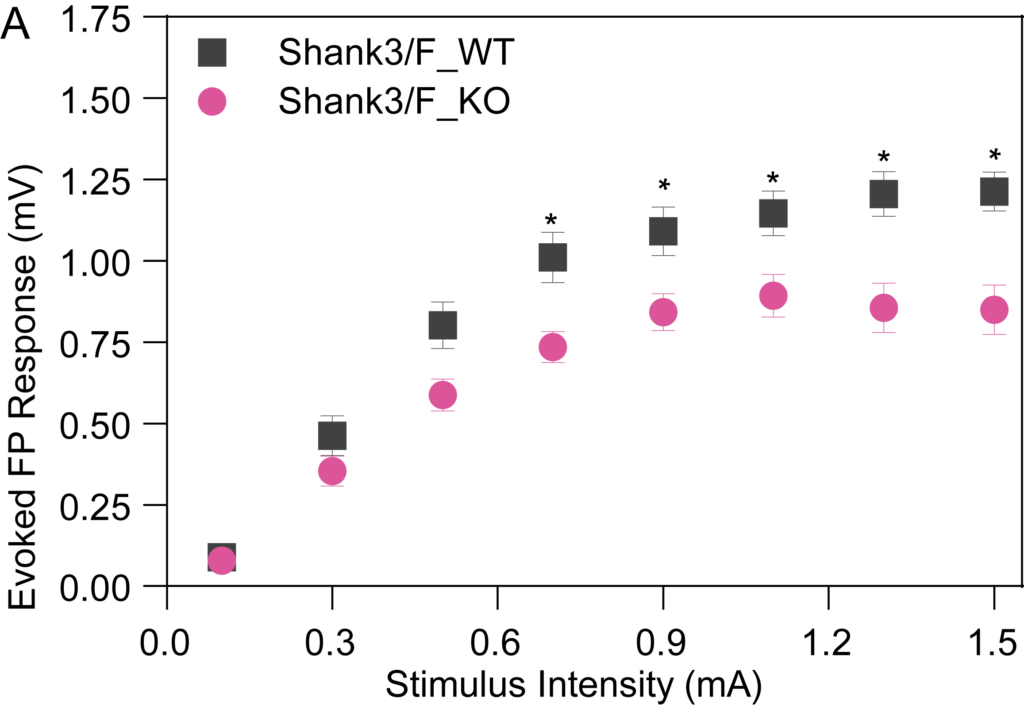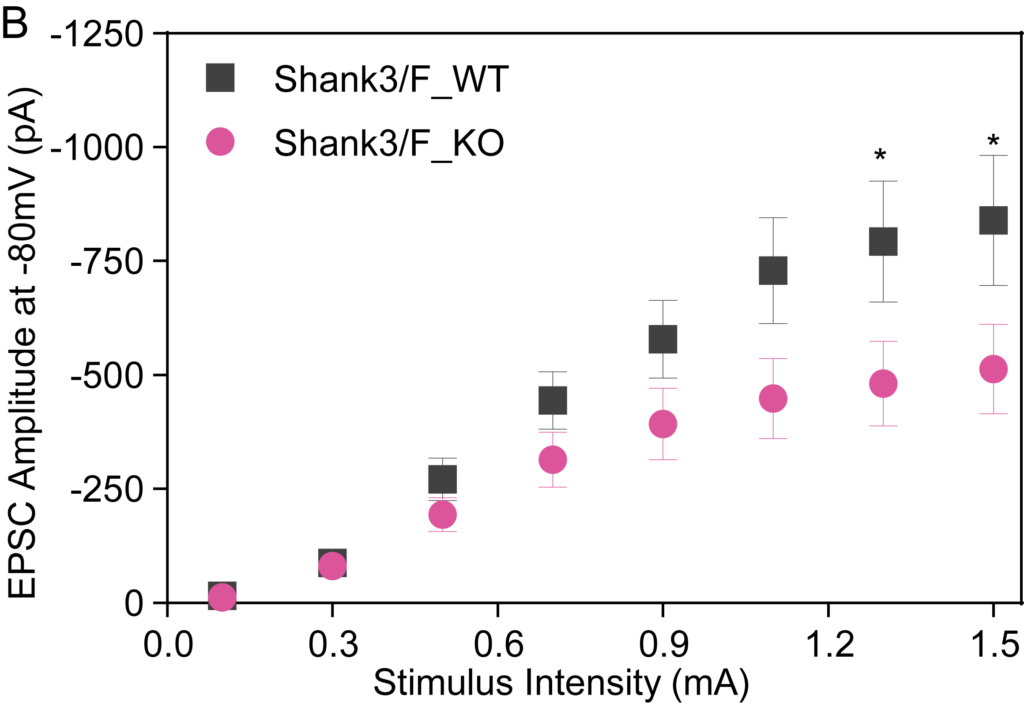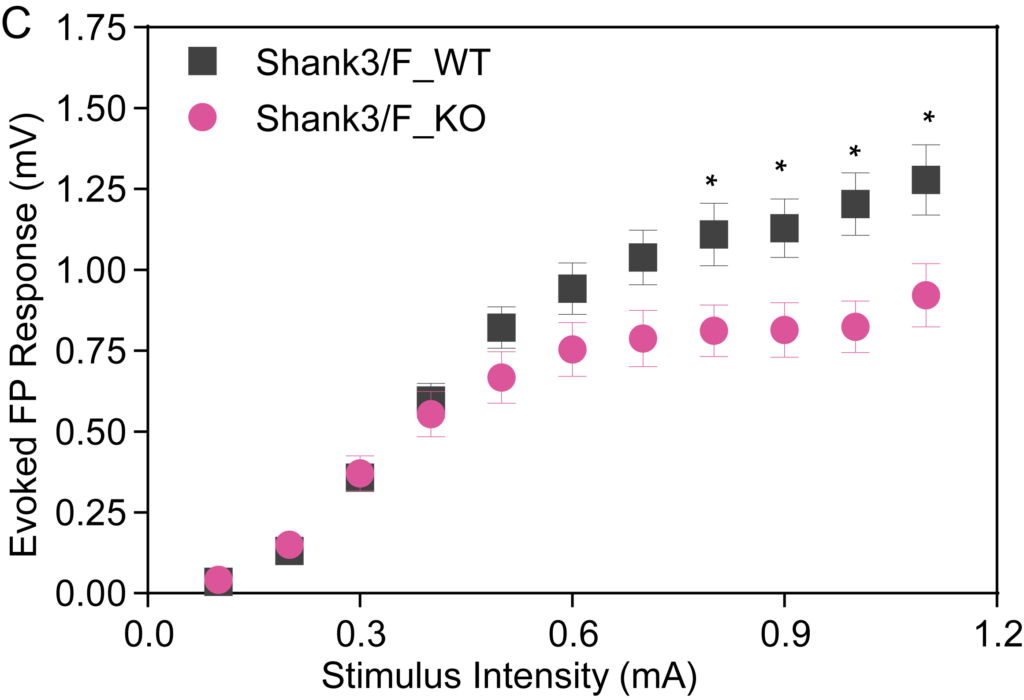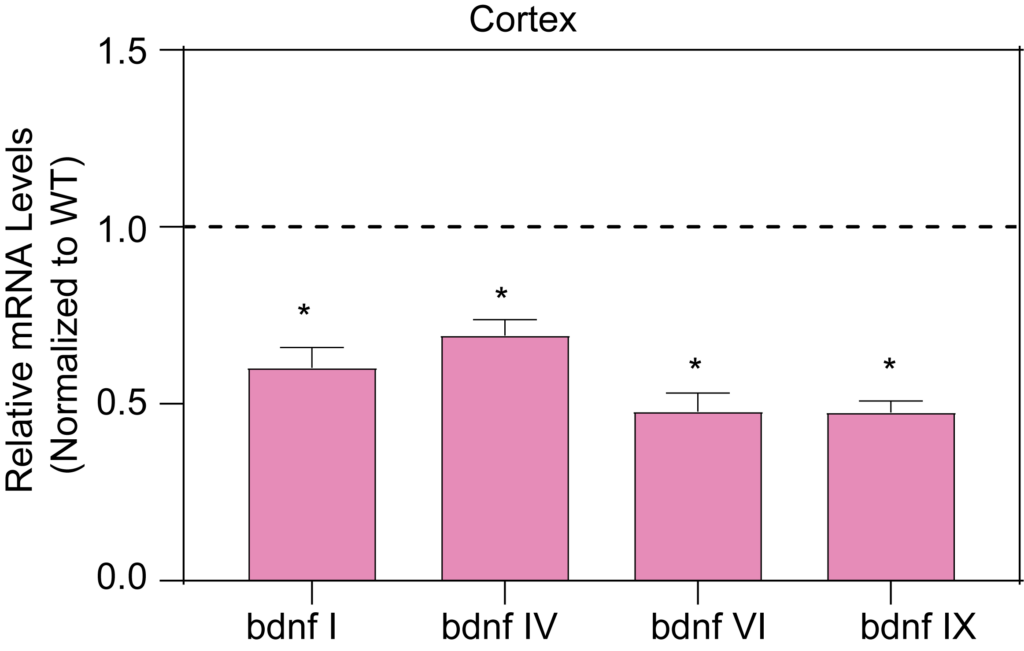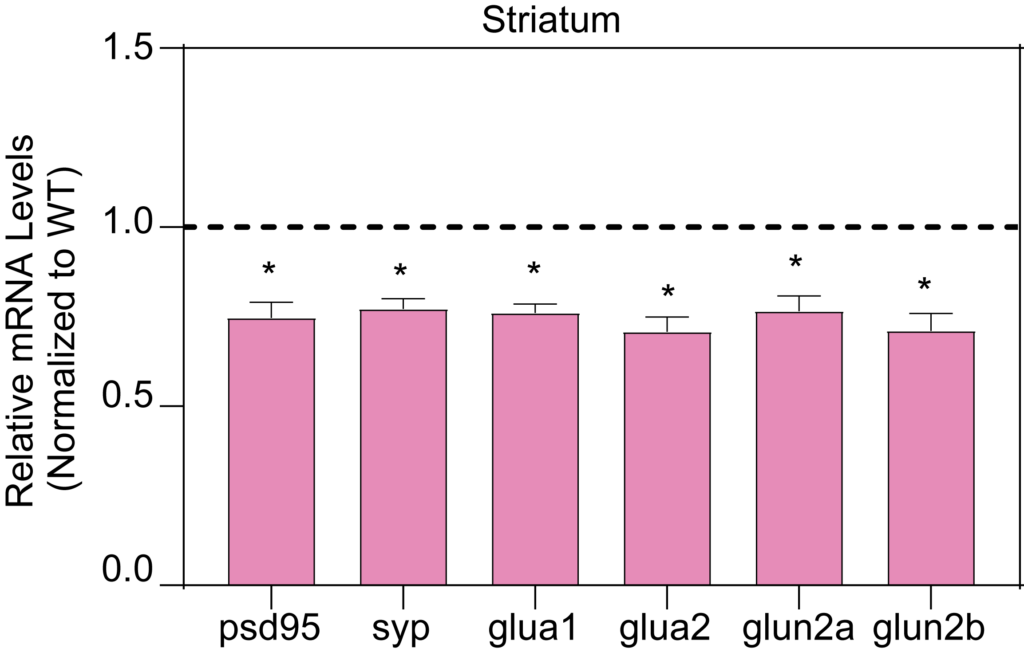Approximately 2% of individuals with autism carry detrimental mutations in the SHANK3 gene, which plays a crucial role in organizing neuronal connections. ASD is a multifaceted neurodevelopmental condition characterized by challenges in social interaction, communication, and behavior. At PsychoGenics, we offer a well-validated Shank3B-KO mouse model.
The Shank3B-KO Mouse Model
About 2% of people with autism carry harmful mutations in SHANK3, a protein that helps organize the connections between neurons Developed by Guoping Feng, Shank3 –Feng mice harbor a deletion of exons 13-16 of the PDZ domains leading to the deletion of the Shank3α and Shank3β isoforms and partial deletion of Shank3γ. These mice exhibit some social, communicative, repetitive, and sensory processing abnormalities associated with autism spectrum disorder, as well as:
- Social deficits
- Decreased activity and locomotion
- Altered gait patterns
- Anxiety-like behaviors
- Modified startle responses and increased pre-pulse inhibition
Results have been replicated across studies.
Electrophysiology & Disease Markers
Partnering to Optimize Your Preclinical ASD Research
Through behavioral assessments and comprehensive analysis, PsychoGenics enables vital insights into the molecular and behavioral aspects of autism spectrum disorder. Collaborate with us to push the boundaries of preclinical ASD research and accelerate your progress.
Our neurodevelopmental disorders areas of expertise:



